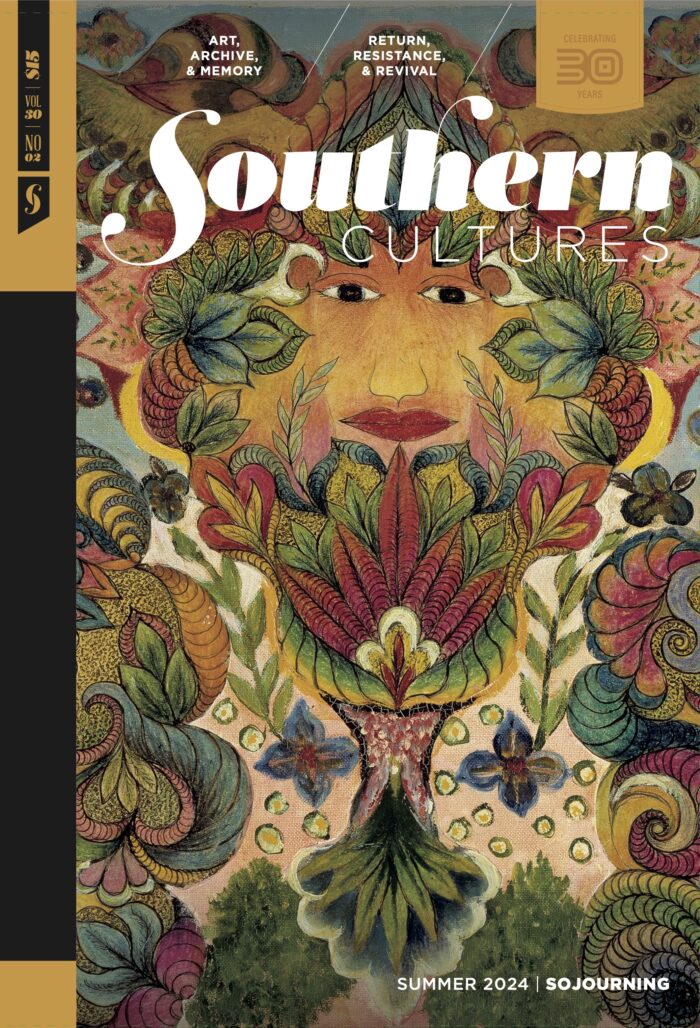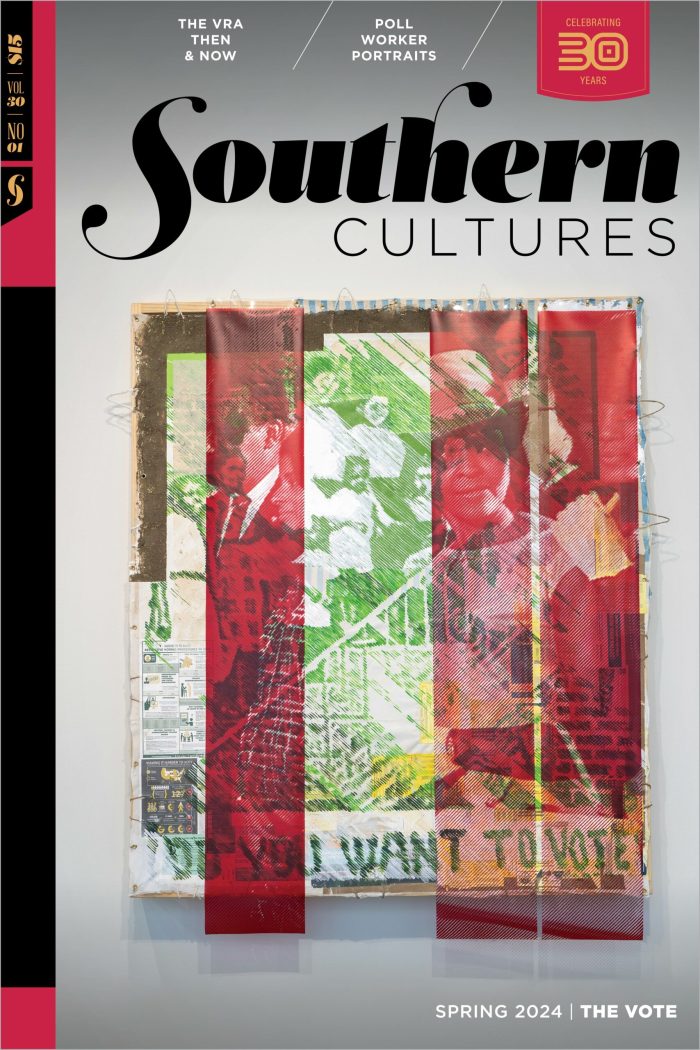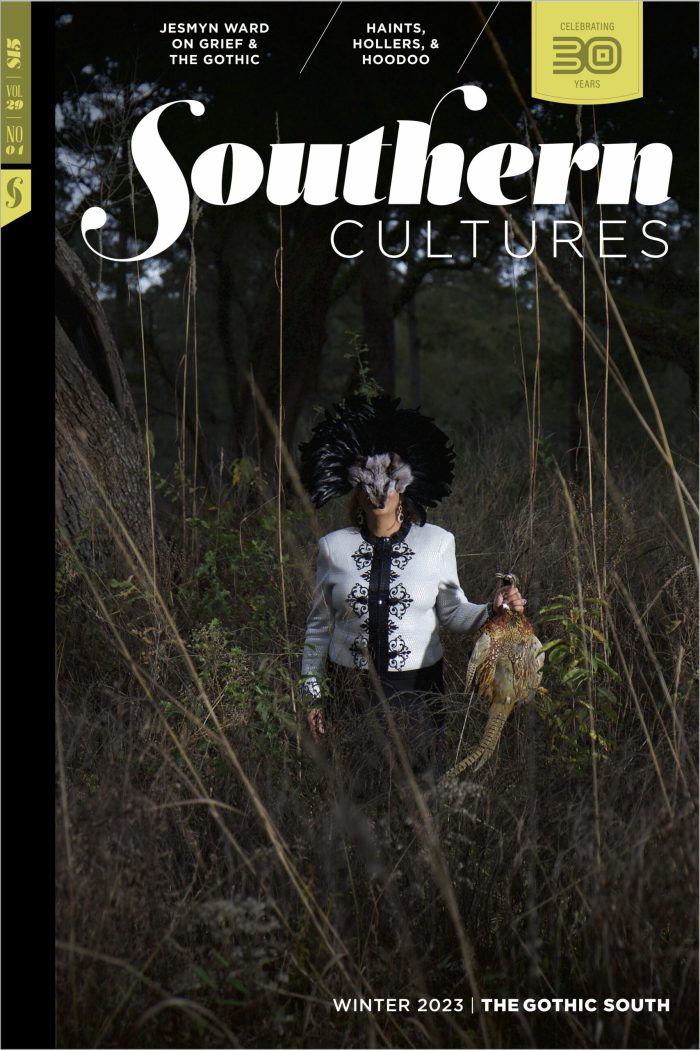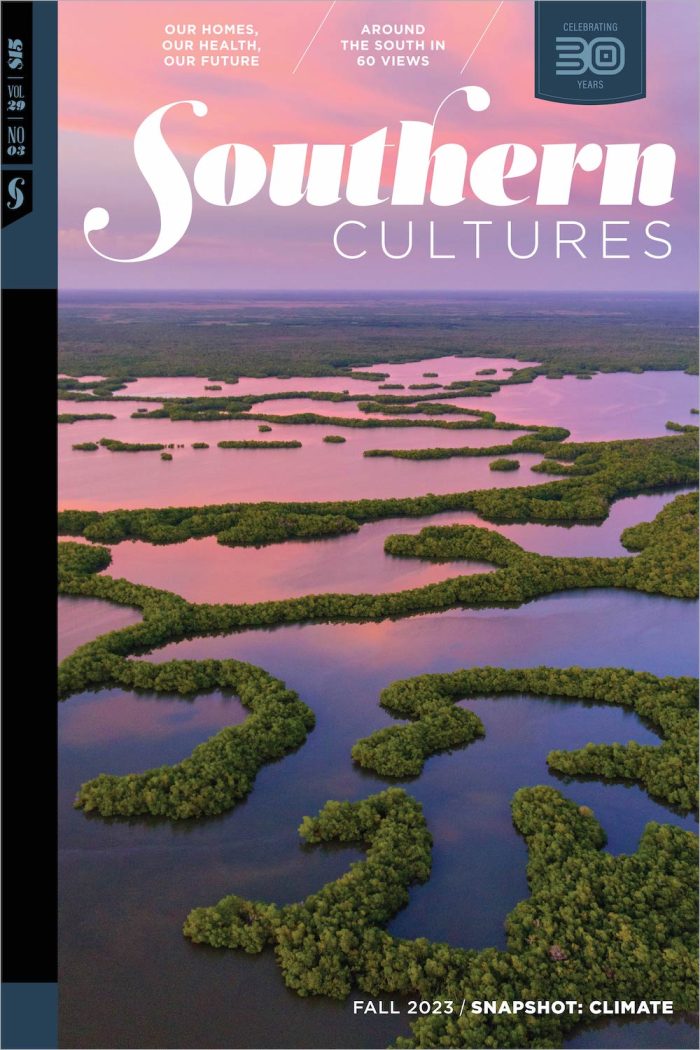by John Michael Vlach,
Janet Seapker
“The use of the F-word was completely unnecessary. I am very disappointed.” Sure, we should have seen it coming. A little more foresight, and we might have avoided having to publish all these letters primarily concerned with administering a good hammering. (In case you’re wondering, we play the role of the nail.) Perhaps when we »
by Harry L. Watson
“Nostalgia’s just not what it used to be.” The pain of loss is a staple theme in southern culture. From Rocky Top to Swanee River, crooning drifters year for home. The prophet warns that Jesus will come back and the bluesman wails that his baby will not. The gospel artist longs for loved ones on »
by Christopher A. Bjornsen,
Robert F. Pace
“Herbert rushed to Greene’s aid, armed with a nine-and-a-half-inch knife and a pistol.” January 25, 1848 started like any other day for University of Alabama student Edward Baptist. Due to give a recitation in class, he practiced in his room, determined to please his professor. But a childish prank would change his life forever. While »
by Dan Sears
Former AP and UPI photographer Dan Sears says that his “Southern Scenes” is “an on-going personal project to document vistas and sights that are disappearing from the South.” For Sears, photography is preservation. So far he has “logged over 1300 miles” in the course of his project, and he has found some of the most »
Encounters with Virginia's Natural Bridge
by Daniel J. Philippon
Ever since Thomas Jefferson proclaimed the Natural Bridge to be “the most sublime of Nature’s works,” visitors have been flocking to this limestone arch, located between what are now the cities of Staunton and Roanoke in Virginia’s Shenandoah Valley. Along with the Peaks of Otter, the Lurray Caverns, the Blue Ridge Parkway, and Shenandoah National »
by Larry J. Griffin
“When we talk of the South, are we talking about the South of Southern Living, a South that is enviably affluent and peopled almost exclusively by gracious whites who seem to do little more than cook gourmet meals and tend to their luscious gardens?” In 1976 the Democratic Party nominated a true blue son of »
by David Zucchino
University Press of Florida, 1999 Carl Hiaasen is blessed with what the military calls a “target-rich environment.” He has the good fortune to patrol South Florida, home to venal politicians, craven public servants, horny cops, rapacious sports team owners, profligate sugar barons and all manner of spectator sports involving carnivorous animals. For a newspaper columnist, »
by Frank G. Queen
Louisiana State University Press, 1999; Mercer University Press, 1999 Whoever said crime doesn’t pay hasn’t been in a bookstore lately. By the pink you know you’re in the Barbie section at Toys R Us and by the black and red covers you know you’re in the bookstore crime section. But Lord, who reads this stuff? »
by Mark Roberts
University of North Carolina Press, 1999 In America’s Instrument Philip Gura and James Bollman take a fascinating look at the banjo, telling the story of how the primitive gourd instrument that was brought here by enslaved Africans captured the imagination of Victorian America. This beautiful book demonstrates how the changes of the post-Civil War marketplace »
by Annette Laing
University of Georgia Press, 1999 Poor God. He must find it thoroughly tiresome to be constantly called upon to endorse all sorts of peculiar causes. Surely, few causes for which His blessing has ever been solicited (and assumed to be granted) were more peculiar than the “Peculiar Institution” itself, slavery in the antebellum South. After »
by Sylvia R. Frey
University of North Carolina Press, 1998 Every so often an essentially synthetic work appears that is more than a synthesis. Exchanging Our Country Marks by Michael A. Gomez is such a book. Although it relies heavily on secondary sources reinforced by extensive research in runaway slave advertisements in southern newspapers and WPA interviews from the »
by James W. Loewen
University of North Carolina Press, 1998 During the Civil War, Wilmington, North Carolina, had been the Confederacy’s major port. In 1898 it was still North Carolina’s largest city, and in that year occurred the notorious Wilmington “race riot.” The 1898 violence was crucial to the history of Wilmington and the state; indeed, as Laura Edwards »
by Georgina Hickey
University of Missouri Press, 1998; New York University Press, 1997 Most students of southern history long ago realized that the Southern Belle was not an accurate reflection of womanhood in the South, not even for the wives of wealthy plantation owners. Certainly the impetus for two recent collections of original essays on southern women reflects »
by Robert M. Calhoon
University of Georgia Press, 1997 What binds the essays in Beyond Image and Convention together is more than simply women pushing on the boundaries of social convention. As the editors rightly conclude, these women “who were at the bottom of the social ladder had little to lose in defying convention.” What drove these women, as »
A Janis Joplin Retrospective
by Gavin James Campbell
“Man, I’d rather have ten years of superhypermost than live to be seventy by sitting in some goddamn chair watching TV,” Janis Joplin said in 1969. A little more than a year later on October 4, 1970, her superhypermost life came to a heroin- and alcohol-induced end in a Lost Angeles hotel room. She was »
by John Herbert (Jack) Roper
I went to the University of North Carolina to study history in graduate school because I was a liberal and I wanted to study with the liberals who defined the term for me in my South. I wanted to be a Chapel Hill Liberal. My friends and family in South Carolina found all of this »
by Michael McFee
You could see it, or it could see you, anywhere in town,the county jail crowning the lofty granite courthouse.I watched it as I rode into Asheville for weekly church;





